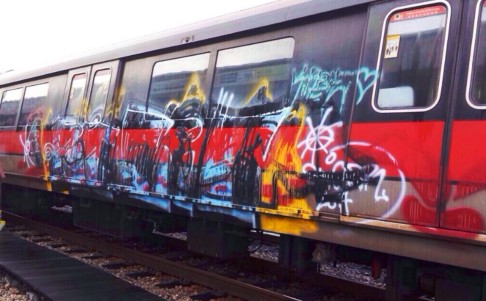German duo to be caned, jailed for spraying graffiti on Singapore train
A Singapore court sentenced two Germans to nine months in prison and three strokes of the cane on Thursday after they pleaded guilty to spray-painting graffiti on a train carriage.

A Singapore court sentenced two Germans to nine months in prison and three strokes of the cane on Thursday after they pleaded guilty to breaking into a depot and spray-painting graffiti on a commuter train carriage.
Andreas Von Knorre, 22, and Elton Hinz, 21, both expressed remorse while being sentenced in the state courts of the island republic.
“This is the darkest episode of my entire life,” said Von Knorre. “I want to apologise to the state of Singapore for the stupid act ... I’ve learned my lesson and will never do it again.”
Hinz added: “I promise I will never do it again. I want to apologise to you, and my family for the shame and situation I’ve put them into.”

Singapore sentences hundreds of prisoners to caning each year as part of a system that has been criticised by rights groups. Vandalism and over-staying by foreigners are offences that can be punished by caning along with other crimes like kidnapping, robbery, drug abuse and sexual abuse.